The Toshiba TR200 3D NAND SSD Review: One Step Forward, One Step Back
by Billy Tallis on October 11, 2017 7:00 AM ESTAnandTech Storage Bench - Light
Our Light storage test has relatively more sequential accesses and lower queue depths than The Destroyer or the Heavy test, and it's by far the shortest test overall. It's based largely on applications that aren't highly dependent on storage performance, so this is a test more of application launch times and file load times. This test can be seen as the sum of all the little delays in daily usage, but with the idle times trimmed to 25ms it takes less than half an hour to run. Details of the Light test can be found here. As with the ATSB Heavy test, this test is run with the drive both freshly erased and empty, and after filling the drive with sequential writes.
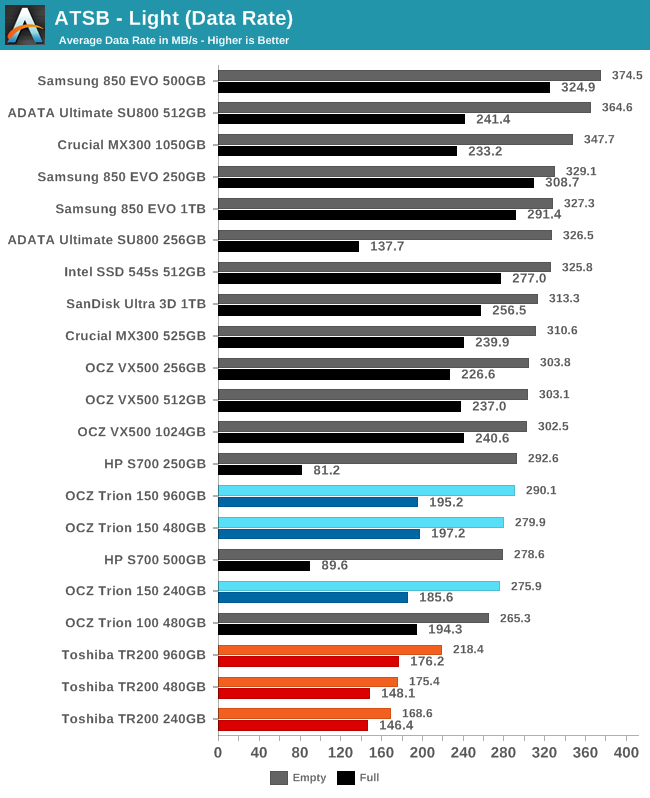
The short duration and low write volume of our Light test don't help the Toshiba TR200 look any better than it did on the harder ATSB tests. The average data rates from the TR200s when the test is run on an empty drive are slower than most other SSDs when completely full. The HP S700 still does worse when full, as does the 256GB ADATA SU800. The Samsung 850 EVO is about twice as fast overall on the Light test.
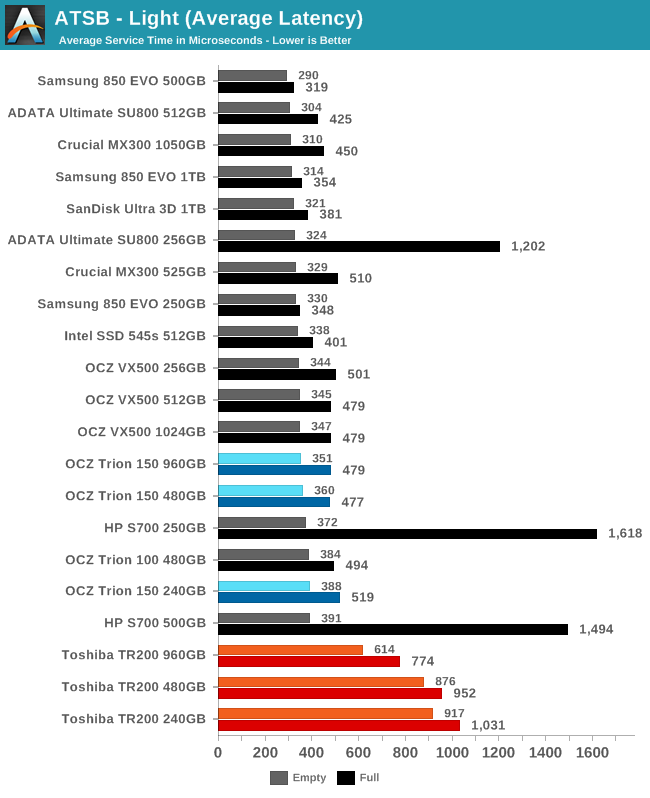
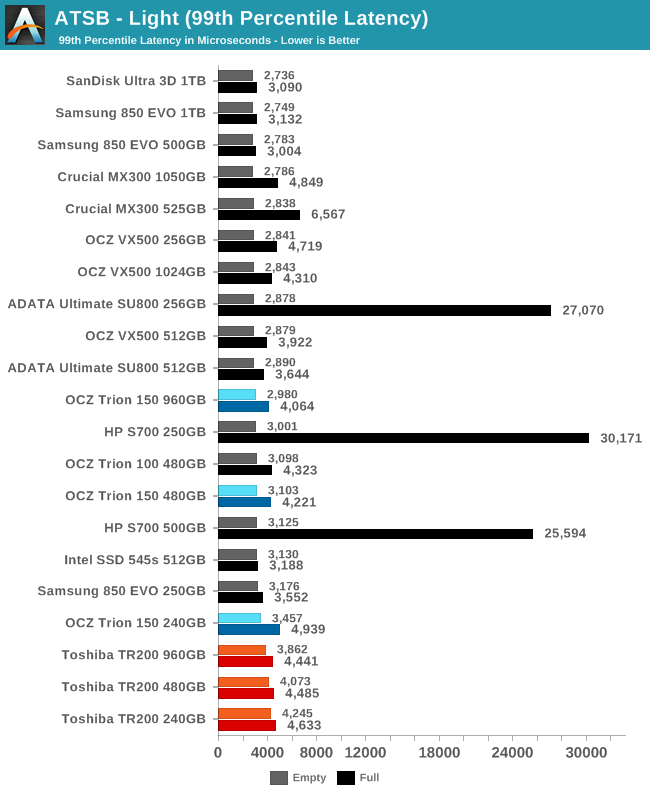
The average latency of the TR200s on the Light test falls well outside the normally narrow range. A few other drives have exceptionally high latency when the test is run on a full drive, but otherwise nothing comes close to the TR200. By contrast, the 99th percentile latency of the TR200 is only modestly worse than other low-end drives, and the TR200 doesn't get massively worse when it is full.
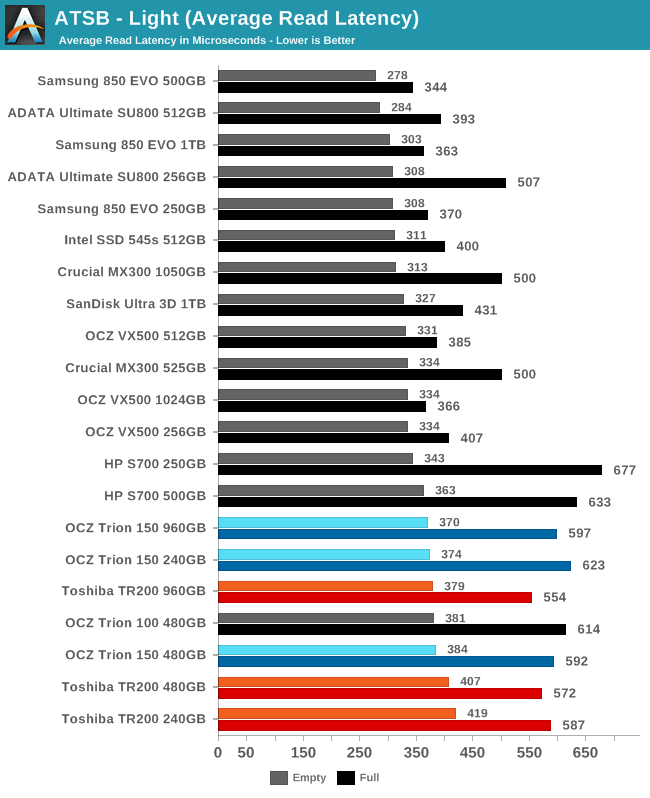
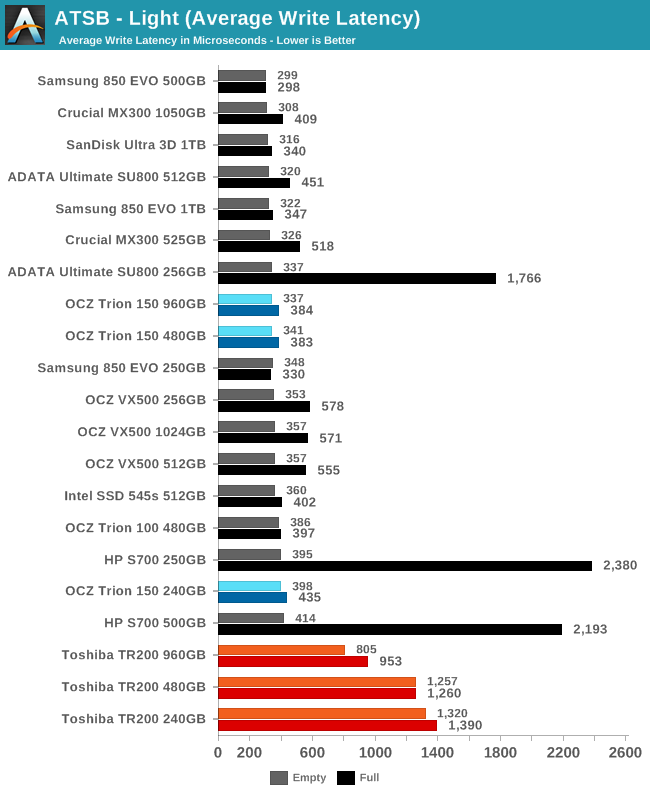
The TR200 has some of the highest average read latency scores on the Light test, but it's not a serious outlier at any capacity. The average write latency is where the TR200's problems lie, as even the fastest 960GB model has twice the write latency of the next slowest drive.
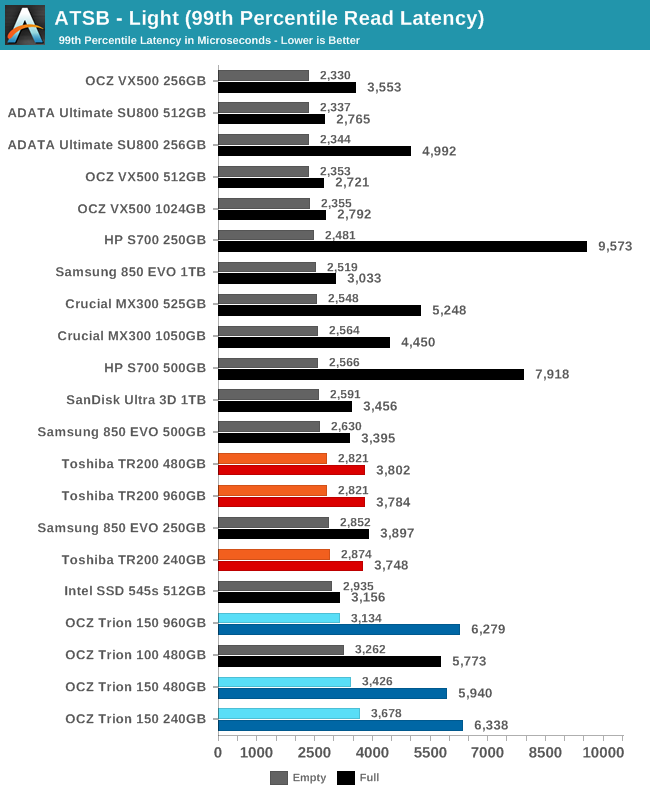
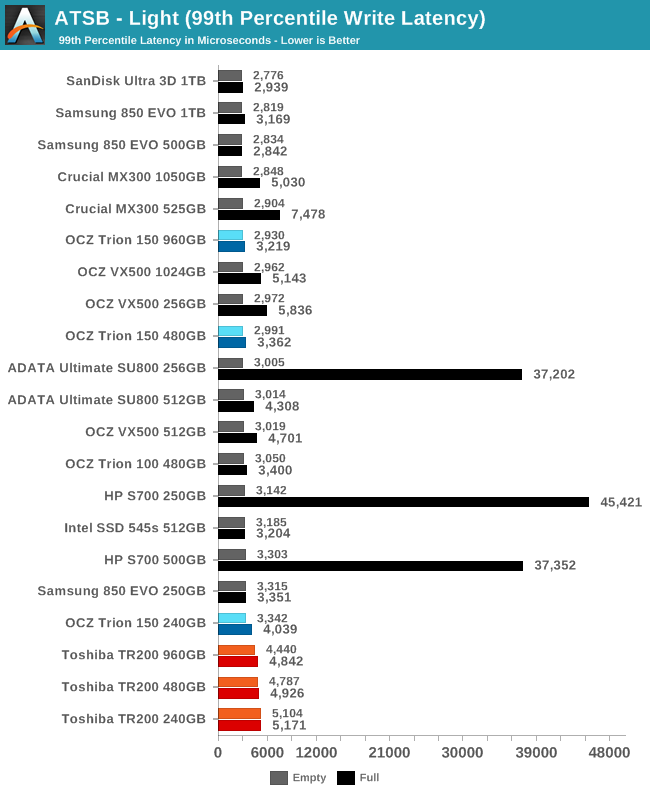
The 99th percentile read latency scores of the TR200 are a modest improvement over its predecessors, and in line with contemporary competitors. The 99th percentile write latency is worse than the TR150 but not high enough to be a problem on this light workload.
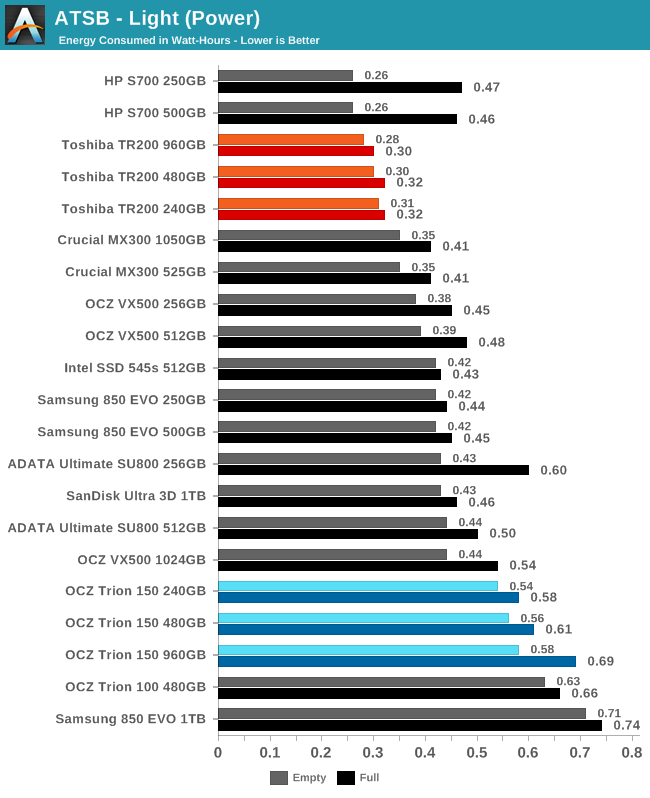
The DRAMless SSDs are again the most energy-efficient despite their lower overall performance. The TR200 loses to the HP S700 when the test is run on an empty drive, but the TR200 takes a clear lead when the drives are full, using less than three quarters the energy of the next most efficient SATA drive.










50 Comments
View All Comments
r3loaded - Wednesday, October 11, 2017 - link
Pwned by an 850 Evo but only $10 cheaper. Yay what a surprise.ddriver - Wednesday, October 11, 2017 - link
Cudos to toshiba for making an ssd that is as slow in sequential writes as a mechanical hdd. I can't imagine it was easy.It's a serious contender for "lousiest sata ssd of 2017".
masouth - Wednesday, October 11, 2017 - link
of just 2017?takeshi7 - Wednesday, October 11, 2017 - link
correction: slower than an hdd in sequential writes. But then again a lot of these cheap TLC drives have lower sustained write speed than HDDs. What really amazes me is that Toshiba actually made an SSD that's worse than the Crucial BX200. I never thought that would be possible.Samus - Wednesday, October 11, 2017 - link
At 1/10th the power consumption though. As hard as it is to defend this drive, it’s clear toshiba had a very specific goal in mind with this drive: cheap upgrades for cheap laptops. As an OEM supplier for many vendors (including even Apple) this drive is adequate for many sub-$500 laptops: being dramless makes power loss protection mostly unnecessary as it will likely recover from sram loss inside the controller, as the indirection table is mirrored off then back to the nand after each write.However, I’ve never been a fan of dramless controllers. Seams like a mind boggling corner to cut when the cost of 512mb DDR3 is $4.
Lolimaster - Wednesday, October 11, 2017 - link
Fact is Crucial MX300 is as cheap and way better, my way way way better,Samus - Sunday, October 15, 2017 - link
I've long stood by that assertion. Crucial and Samsung SSD's are the only mainstream drives worth considering. Sure, Sandisk, Intel, even Mushkin have their niche products, but Samsung and Crucial have no real "duds."Flunk - Wednesday, October 11, 2017 - link
Has Anandtech reviewed another budget SSD that's competitive with the 850 Evo, seems like that's the gold standard at the moment. I just bought one for my Mom for Christmas.theramenman - Wednesday, October 11, 2017 - link
The SanDisk Ultra 3D they reviewed a bit ago gets similar performance to a 850 Evo for $43 less (at least for the 1TB version).sonny73n - Thursday, October 12, 2017 - link
3 most valued SSD models currently on Amazon. One of them is the BX300 with capacity max out at 480GB which I can only compare it to the similar of the other 2.- Samsung 850 Evo 500GB $160
- SanDisk Ultra 3D 500GB $170
- Crucial BX300 480GB $145
The first 2 are made of TLC NAND and the BX300 is made of MLC. No brainer to pick the best one here.